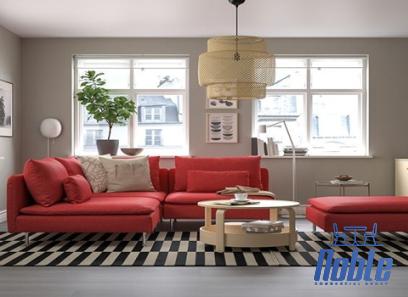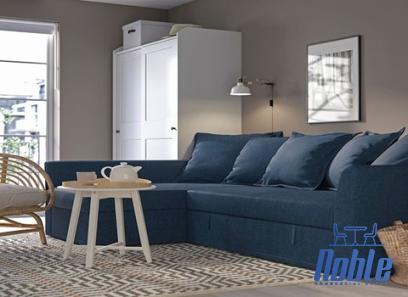In answer to this question (Does Goodwill take wooden furniture?), it must be said that Goodwill, which is considered a charity, seeks to provide better conditions for those under its cover (the poor) so that they can live in a better condition.
By donating to Goodwill South Florida, more people with disabilities have the opportunity to learn new skills and reach their full potential.
12 tips for choosing the best wood for furniture
Furniture is the most important aspect of any residential or commercial space. Due to its daily contact with the human body, the best wood for furniture should be mold resistant and protected from fungal attacks.
However, being organic, it is certainly susceptible to rot and damage. Over the years, wood has proven to be the best choice for drilling, sawing, and polishing furniture, among other materials on the market.
Raw wood undergoes extensive processing through intensive processing before it is ready for use. This procedure technically releases moisture and other quarrel factors and prepares dry and strong wood. Distressed wood, available for further development, is the ultimate wood to design our artistic furniture.
Speaking of furniture making, today, all types of wood are used to make furniture. Of the many varieties, wood quality and marketability are key factors in choosing the perfect replacement. Apart from these two main ones, there is a qualitative list of pros and cons to consider before you start decorating your home or office.
Below are some tips for choosing the best wood for furniture.
Hardwood or Softwood:
Depending on the title in which they are invested, hardwoods and softwoods are not distinguished by their specific hardness or degree. Hardwoods and softwoods are distinguished by their density and their anatomically complex structure, with hardwoods from trees with flowers and softwoods to softwoods.
Hardwoods are denser than softwoods. Not all hardwoods are used for furniture, but all softwoods are used to prepare furniture ranging from the most utilitarian to ornamental.
Oak, maple, teak, mahogany, beech, alder, rosewood, mulberry, walnut, and Merbau are hardwoods, while cedar, pine, redwood, and deodar are conifers. That said, choosing hardwood or softwood depends on the type of furniture you plan to build.
solid wood
When sorting wood, make sure it is a real solid wood plank. Both hardwood and softwood are solid wood. However, it may have been supplied and filled with rotting wood. Solid wood can be treated effectively.
This means that carpenters can easily use nails, screws, hammers, glues, and crafts without the grain of the wood being affected. Irregular grains such as spirals or tangles should not be considered for furniture construction.
To identify solid wood, make sure:
Straight, aligned, untwisted, and tight fibers
The direction of the ring should match the edges
If you can’t decide, sand the wood. Sanding reveals putty or compacted wood shavings
fire resistance
The wood you choose must have good fire resistance for domestic and residential reasons. Dense wood is more fire resistant due to its natural insulating properties. Hardwoods are, therefore, suitable for preparing cabinetry and flooring in kitchens and bathrooms. At the same time, conifers have low fire resistance.
Power
The strength of a tree is determined by its ability to withstand pressure from all directions. For the same reason, wood should also have the ability to retain its shape even after rigorous treatment or manufacturing procedures.
The grain of the wood follows a certain direction. Thus, hammers and other loads that are not aligned during carpentry should not lead to breakage or ugly cracks. Walnut, teak, and Merbau are sturdy woods often used in Indian living room furniture.
water permeability
Being an organic material, water seeps through the pores of the wood over time. Moisture shortens the life of wood during the decay process. The chosen wood must be more impermeable.
termite resistant
The best wood for furniture must necessarily be resistant to termites. High-quality hard and softwoods are naturally resistant to termites. However, due to budget constraints, ensure the wood is sanded, lacquered, or coated to prevent termite attacks.
Mitigation
Wood rot is usually hardened by moisture, penetration, and physical damage. Dense, densely-grained wood resists multiple rots. Hardwoods are less prone to rot than softwoods. Teak wood is commonly used for outdoor furniture due to its durability.
porous or non-porous
The wood is considered porous or non-porous due to the presence of tracheids and blood vessels. Conifers have relatively few or no blood vessels. This property allows the wood to quickly absorb adhesives used to attach parts and laminates to surfaces. Therefore, it is useful for developing finer products.
appearance and color
Choose brightly colored wood to add charm to your space. In addition, the wood should be well sanded, free of mold and termites, properly sized, and free of discoloration and warping. A darker shade of wood than a lighter shade is recommended.
Walnut mahogany and teak are darker and can cover a wide range of exquisite furniture. Satinwood offers a vintage look, while rosewood or shisham is simply striking.
hardness
The optimum toughness of wood for furniture should be able to withstand knocks, frequent hammering, and vibration and be fairly indestructible. In addition, when preparing, fixing, or adjusting furniture, a gradual bending should not tear.
ballast
Hardwoods are heavier than softwoods, so they are easier to pick up for structural furniture and large pieces of furniture. For the preparation of tables, cupboards, cupboards, beds, and chairs, oak, teak, etc., are preferred over deodorants.
sustainability
Wood, defined by time, is durable if it has not been altered by decay from many sources. Dried and treated wood resistant to termites and fungi, chemical preservatives ensure long-term protection of the interior of the wood.
Mahogany and teak are naturally resistant to termites, which is why few expensive kinds of wood are of wood on the market. Durable and reliable wood is safe from marine life, beetles, fungi, termites, and unexpected impacts.










Your comment submitted.